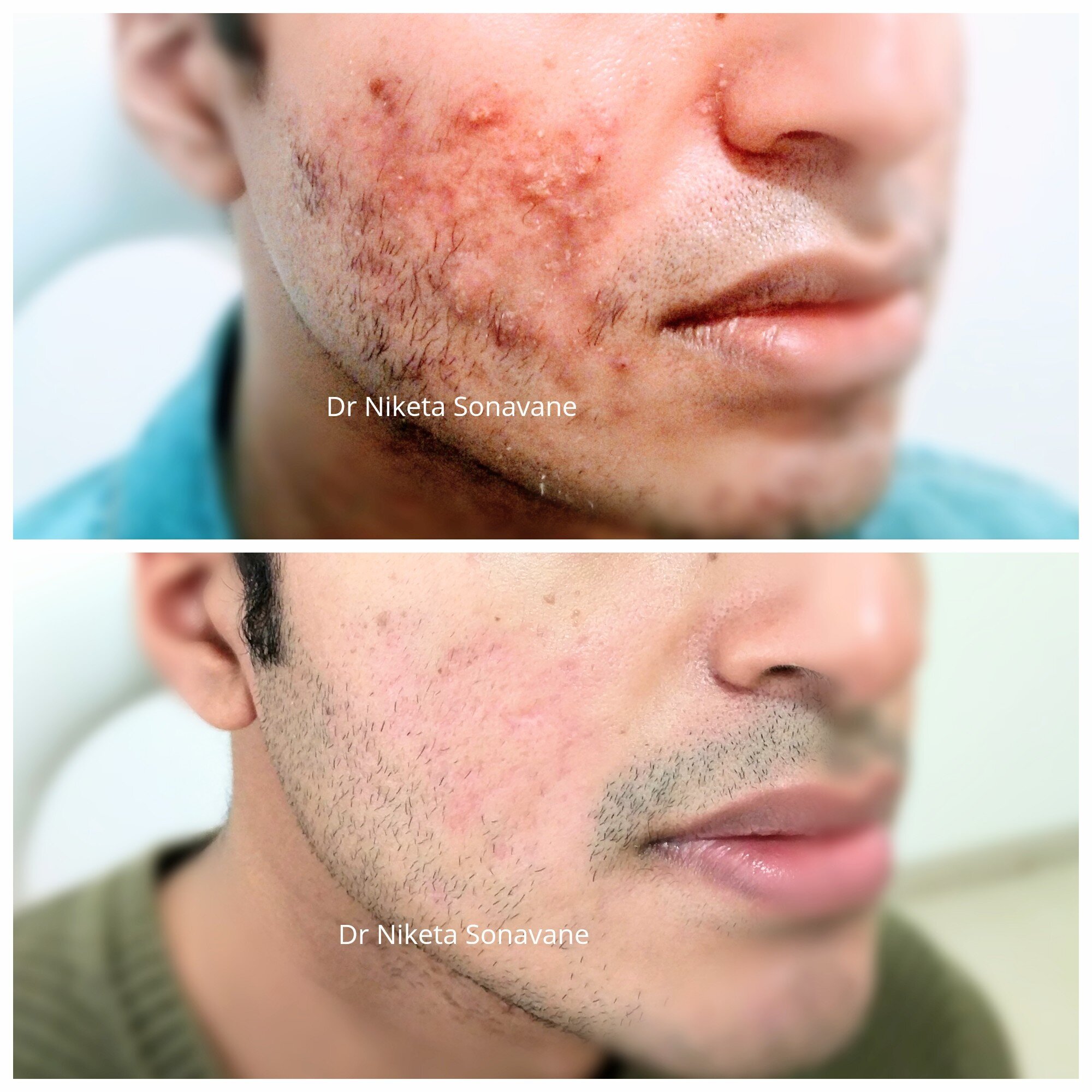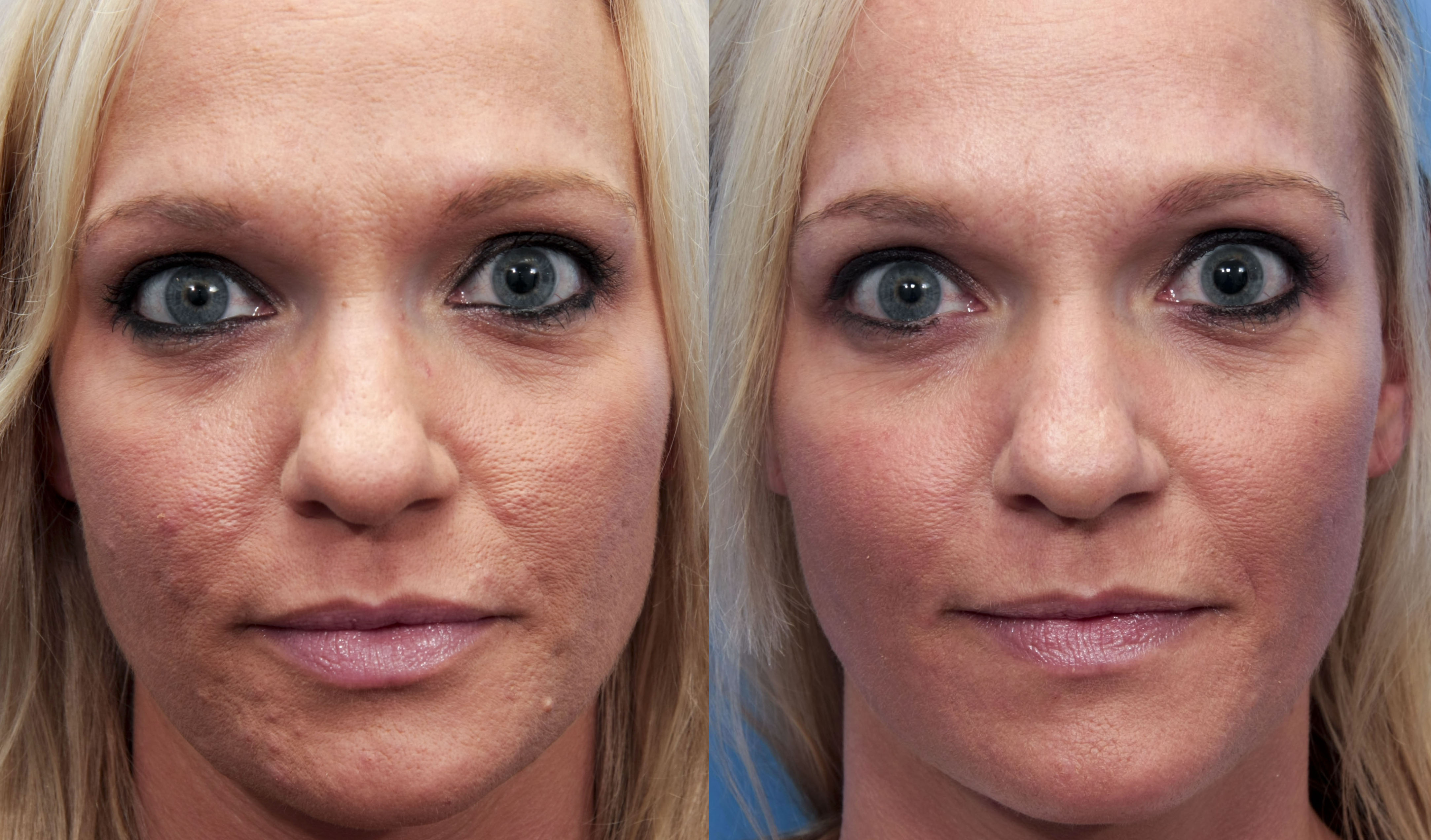Recognizing the Various Skin Conditions and Effective Therapy Choices for Acne Scars
Acne marks stand for a complex interaction of skin conditions that considerably impact people' self-confidence and general skin health and wellness. Understanding the unique sorts of acne scars-- atrophic and hypertrophic-- along with their underlying reasons, is crucial for identifying efficient treatment techniques. Numerous therapeutic choices exist, varying from sophisticated skin-related procedures to natural remedies. The effectiveness of these treatments typically hinges on personalized analyses by certified experts. As we explore the landscape of acne scar administration, it ends up being evident that the trip towards clearer skin might include greater than simply topical services.
Types of Acne Marks
Acne scars can show up in different types, each needing certain treatment strategies. The two key classifications of acne scars are hypertrophic and atrophic marks. Atrophic scars are characterized by a loss of cells, causing clinically depressed areas on the skin. These marks are more identified into 3 subtypes: ice pick marks, which are deep and slim; boxcar scars, which are larger and have distinct sides; and rolling scars, which develop a wave-like appearance as a result of irregular skin appearance.
In comparison, hypertrophic marks arise from an overflow of collagen throughout the recovery procedure, bring about raised locations on the skin. These scars are usually solid and can vary in shade, occasionally showing up red or darker than the bordering skin.

Sources Of Acne Scarring
Marking takes place as a result of the body's all-natural healing reaction to swelling and injury brought on by acne sores. When acne forms, it activates an inflammatory response, leading to the launch of various cytokines and growth elements that advertise recovery. This process can often lead to too much tissue development or poor fixing, resulting in marks.
The main sources of acne scarring consist of the severity of the acne itself, period of the sores, and specific skin kinds. Serious inflammatory acne, such as cysts and nodules, is most likely to lead to scarring because of deeper tissue damage. Additionally, inappropriate handling of acne lesions, such as picking or squeezing, can intensify cells injury and inflammation, boosting the possibility of scarring.
Genetic predisposition likewise plays a considerable duty; individuals with a family members history of scarring go to a higher threat. Skin type and shade can influence mark formation, as darker skin tones might experience post-inflammatory hyperpigmentation, while lighter skin may develop atrophic scars.

Treatment Choices for Scarring
Efficient treatment alternatives for acne scarring differ depending on the type and extent of the marks. Typically classified into atrophic, hypertrophic, and keloid scars, these conditions call for tailored techniques for optimal outcomes.
For atrophic marks, which are defined by a loss of cells, therapies such as chemical peels, microdermabrasion, and laser treatment are typically utilized. These techniques promote skin renewal and promote collagen production, thereby improving skin texture. Subcision, a minimally intrusive treatment, can also work by damaging up coarse bands underneath the skin.
Hypertrophic and keloid scars can be extra challenging to deal with. Options consist of corticosteroid injections to reduce swelling and squash the scars. acne scars treatment. In many cases, cryotherapy or laser therapy may be recommended to minimize their appearance
Surgical choices are offered for extreme scarring, where excision or skin grafting might be required. It's important for individuals to speak with a skin specialist to analyze their specific mark kind and go over the most suitable therapy strategy. Combining several treatments frequently produces the finest end results, making sure that each patient's unique skin condition is resolved properly.
Natural Home Remedy and Natural Solutions
All-natural remedies and home remedies can supply an easily accessible technique for individuals looking for to boost the look of acne scars. Numerous active ingredients found in the home cooking area have actually demonstrated possible benefits in boosting skin structure and advertising recovery.
Applying fresh aloe vera gel directly onto the scars can aid improve skin hydration and lower redness. Honey has all-natural anti-bacterial and moisturizing top qualities that can help in scar recovery.
An additional reliable option is lemon juice, which functions as a natural exfoliant and can lighten hyperpigmentation. It must be used very carefully, as it might create photosensitivity. Oat meal masks are also advantageous; their gentle peeling can aid get rid of dead skin cells while relaxing inflammation.
Crucial oils, such as tea tree oil and lavender oil, can better support mark healing because of their antimicrobial homes. It is vital to perform a patch examination prior to applying any treatment to make sure there are no adverse reactions. These natural services can be a complementary approach in the trip to lessen acne scars.
Avoiding Future Scarring
Adopting a positive approach to skin care can significantly minimize the threat of establishing future acne marks. Regular cleansing, peeling, and hydration can assist keep skin health and stop clogged pores.
Furthermore, staying clear of the temptation to press or pick acne lesions is critical, as this can cause swelling and subsequent scarring. Instead, people need to focus on applying topical therapies that advertise original site healing and decrease swelling. Active ingredients such as salicylic acid, benzoyl peroxide, and retinoids are known for their effectiveness in taking care of acne and minimizing marks.

Last but not least, maintaining a healthy diet plan abundant in anti-oxidants and staying hydrated assistances skin regrowth. By implementing these safety nets, people can significantly reduce their danger of future scarring and advertise overall skin health.
Final Thought
Finally, a thorough understanding of acne scars, encompassing both atrophic and hypertrophic kinds, is crucial for effective treatment strategies. Tailored interventions, including expert therapies and natural remedy, can significantly improve skin appearance and texture. Safety nets also play an important duty in decreasing future scarring. Appointment with a skin doctor continues to be essential to create personalized methods that think about individual skin types and scar severity, ultimately boosting the efficiency of mark administration techniques.
Acne scars represent a complicated interplay of skin problems that substantially impact people' self-confidence and total skin health and wellness. The two key classifications of acne marks are hypertrophic and atrophic that site marks. These scars are more categorized right into 3 subtypes: ice choice scars, which are deep and slim; boxcar marks, which are larger and have distinct edges; and rolling marks, which create a wave-like look due to uneven skin appearance.
An extensive consultation with a skin doctor can help figure out the most appropriate intervention, taking right into account the individual's skin type, mark seriousness, and total skin health.
Examination with a skin doctor continues to be critical to develop customized strategies that take into consideration specific skin types and scar intensity, inevitably enhancing the effectiveness of mark monitoring strategies.